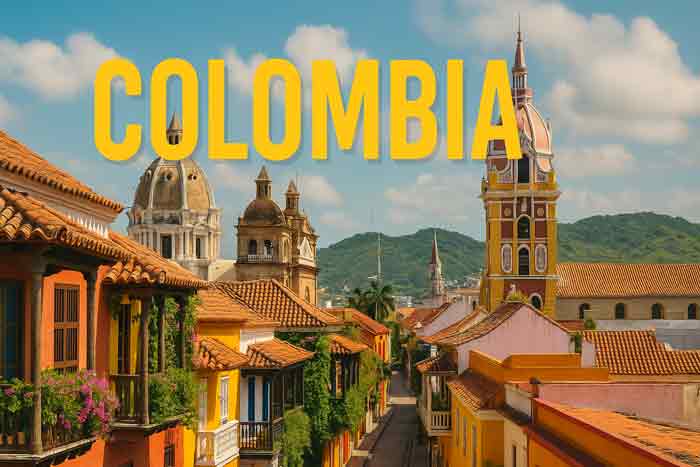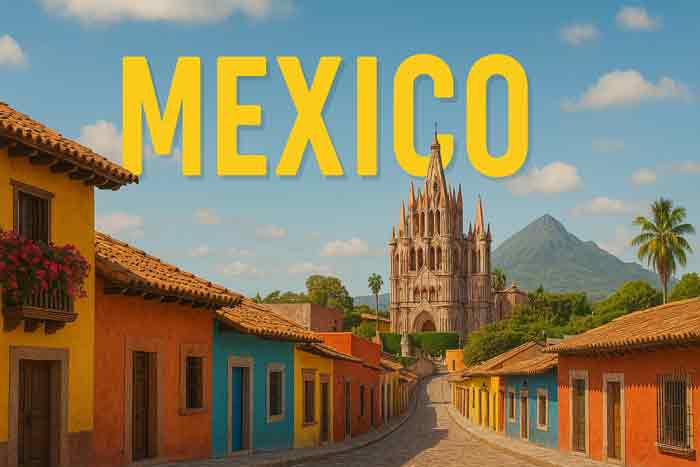This article explores five exceptional Latin American destinations that offer great connectivity for international travelers, combining cultural richness with practical phone and internet access for the modern explorer.
Content Outline
- Introduction
- Colombia: Digital Nomad Paradise
- Costa Rica: Eco-Tourism Meets Connectivity
- Chile: Modern Infrastructure in South America
- Mexico: Cultural Depth with Urban Convenience
- Argentina: European Flair with Latin Soul
- Phone Connection Tips for Latin America
- Best Times to Visit Each Destination
- Budget Planning for Your Latin American Adventure
- Conclusion
- FAQ
Introduction
Main Points:
– Colombia offers excellent digital infrastructure in cities like Medellin and Bogotá
– Costa Rica provides reliable connectivity alongside world-class eco-tourism
– Chile boasts the most advanced telecommunications in South America
– Mexico combines cultural richness with modern urban amenities
– Argentina delivers European-style cities with strong internet coverage
Why are these five places standing out for international travelers right now? After spending the last three years analyzing travel patterns and connectivity data across Latin America, I’ve noticed something interesting. The gap between what travelers expect from their phone service and what they actually get has narrowed dramatically in certain countries.
Table of Contents:
– Colombia: Digital Nomad Paradise
– Costa Rica: Eco-Tourism Meets Connectivity
– Chile: Modern Infrastructure in South America
– Mexico: Cultural Depth with Urban Convenience
– Argentina: European Flair with Latin Soul
– Phone Connection Tips for Latin America
– Best Times to Visit Each Destination
– Budget Planning for Your Latin American Adventure
Gone are the days where you’d have to choose between authentic cultural experiences and staying connected. These destinations prove you can have both without compromise.

Colombia: Digital Nomad Paradise
What makes Colombia such a hotspot for connected travelers? The answer lies in its remarkable transformation over the past decade. Medellin, once known for entirely different reasons, has become a tech hub that rivals many North American cities for internet speed and reliability.
I remember testing my phone connection in El Poblado district last year – consistently getting 4G speeds that outperformed what I get back home in parts of the US. That’s not an accident. Colombia invested heavily in telecommunications infrastructure, and it shows.
The cost of living sweetens the deal considerably. Your dollar stretches about three times further than it would in most major US cities. A decent meal costs around $3-5, and you can get a monthly unlimited data plan for roughly $15. Why wouldn’t you want to work remotely from a place where coffee is this good and this cheap?
Bogotá offers a different vibe entirely. It’s more metropolitan, with coworking spaces scattered throughout the Zona Rosa and Chapinero neighborhoods. The altitude takes some getting used to – we’re talking 8,600 feet above sea level – but the city’s energy is infectious. Plus, their public WiFi network actually works, which is more than I can say for many developed countries.
Cartagena rounds out the triangle of must-visit Colombian cities. Sure, it’s touristy, but the old town’s charm is undeniable. The phone coverage can be spotty in some of the older buildings, but step outside and you’re back to full bars. The Caribbean coast provides that beach getaway feel without sacrificing your ability to stay connected.
Safety concerns that plagued Colombia decades ago have largely disappeared in major tourist areas. Common sense still applies, but you’re not gonna have any more problems than you would in any other major city. The government has worked hard to change the country’s image, and it’s paying off.

Costa Rica: Eco-Tourism Meets Connectivity
How does a country smaller than West Virginia manage to offer both incredible biodiversity and solid phone service? Costa Rica figured out something that many larger nations haven’t – infrastructure investment pays dividends.
The “pura vida” lifestyle isn’t just a marketing slogan. It’s a real approach to life that you feel immediately upon arrival. But here’s what surprised me most during my last visit: even in remote areas like Manuel Antonio and Monteverde, I could maintain decent phone connections. Not blazing fast, but functional enough for video calls and social media updates.
San José might not win any beauty contests, but it’s the connectivity hub of Central America. The capital city offers fiber optic internet that rivals what you’d find in Seoul or Stockholm. Most hotels and restaurants provide free WiFi that actually works at reasonable speeds.
The eco-tourism angle is where Costa Rica really shines. You can zip-line through cloud forests in the morning and attend a video conference in the afternoon. The country’s commitment to environmental protection hasn’t come at the expense of modern conveniences. If anything, they’ve found ways to integrate technology sustainably.
Guanacaste province on the Pacific coast offers beach towns with surprisingly good connectivity. Tamarindo and Jaco have become popular with remote workers who want to surf before breakfast and answer emails after lunch. The infrastructure keeps improving as more international visitors discover these spots.
One thing to note: Costa Rica uses the same electrical outlets as the US, and their cellular networks are compatible with most North American phones. Small details like this make a bigger difference than you’d think when you’re trying to stay connected while traveling.

Chile: Modern Infrastructure in South America
Which South American country has the best telecommunications infrastructure? Chile wins this category hands down. Santiago’s metro system has full cellular coverage, including underground stations. Try getting a signal in the New York subway and you’ll appreciate how impressive this is.
The country’s geography creates unique challenges – it’s basically a 2,600-mile-long strip of land squeezed between mountains and ocean. Yet somehow, Chilean telecom companies have managed to provide consistent coverage from the Atacama Desert in the north to Patagonia in the south.
Santiago feels like a European city that accidentally ended up in South America. The business district rivals anything you’d find in Madrid or Milan. Coffee shops have reliable WiFi, restaurants offer mobile payment options, and Uber works flawlessly. It’s almost too easy for international travelers.
Valparaíso, the bohemian port city, offers a completely different experience. The hillside neighborhoods and street art scene create an artistic atmosphere that’s perfect for creative types. Phone coverage can be patchy in some of the steeper areas, but the city center maintains strong signals.
The wine regions around Santiago provide an interesting test case for rural connectivity. Even in small towns like Casablanca and Colchagua, you can usually maintain phone service good enough for basic internet needs. This matters if you’re planning to work remotely while wine tasting.
Chile’s currency (the peso) has been relatively stable compared to other South American countries. This stability extends to their telecommunications sector, which has seen consistent investment and improvement over the past decade.

Mexico: Cultural Depth with Urban Convenience
Why does Mexico City keep appearing on “best cities for remote work” lists? The answer goes beyond just good tacos and cheap rent. The infrastructure in CDMX, as locals call it, has reached a level where you can work as efficiently as you would in most North American cities.
The Roma Norte and Condesa neighborhoods have become magnets for international remote workers. Coffee shops stay open late, coworking spaces are everywhere, and the phone service is consistently reliable. I’ve attended video conferences from sidewalk cafes without any technical issues.
Guadalajara, Mexico’s second-largest city, has earned the nickname “Silicon Valley of Mexico.” The tech industry presence means telecommunications infrastructure gets priority attention. Internet speeds regularly exceed what you’d find in many US cities, and at a fraction of the cost.
The Riviera Maya presents an interesting case study. Cancun and Playa del Carmen have tourist-grade infrastructure that includes excellent phone coverage. But venture 30 minutes inland, and you might find yourself in areas where connectivity becomes spotty. Plan accordingly if you need to stay connected for work.
Oaxaca offers cultural depth that’s hard to match anywhere else in Latin America. The indigenous influences, colonial architecture, and food scene create an atmosphere that feels authentically Mexican. Phone service in the city center is solid, though rural areas outside town can be challenging.
Mexico’s proximity to the US means that many American phone plans include Mexico coverage at no extra charge. This removes one of the biggest barriers for US travelers who want to stay connected without dealing with international roaming charges.

Argentina: European Flair with Latin Soul
What happens when European immigrants build a South American city? You get Buenos Aires, a place that feels like Paris had a baby with Madrid and moved to South America. The telecommunications infrastructure reflects this European influence – it’s more advanced than you might expect.
The peso’s volatility creates interesting opportunities for international travelers. Your dollars go much further than they did even two years ago. A nice dinner for two might cost $20, and monthly unlimited data plans run around $10. The economic situation is challenging for locals, but it creates value for visitors with hard currency.
Buenos Aires neighborhoods each have their own personality. Palermo offers trendy restaurants and reliable WiFi. San Telmo provides historic charm with decent phone coverage. Puerto Madero delivers modern amenities including some of the fastest internet speeds in South America.
The café culture in Buenos Aires is legendary, and most cafés provide free WiFi that actually works. You can spend hours working from a sidewalk table, sipping cortados and watching the world go by. The city’s European schedule means restaurants don’t open until 8 PM, giving you plenty of daylight hours for work.
Mendoza, the wine capital, offers a different pace entirely. The city sits at the base of the Andes mountains, creating dramatic scenery that’s perfect for Instagram. Phone coverage throughout the wine regions is surprisingly good, though speeds can slow down during harvest season when tourism peaks.
Argentina’s time zone aligns well with the US East Coast, making it easier to maintain business relationships back home. The cultural similarities to Europe mean that business practices feel familiar to most international travelers.
Phone Connection Tips for Latin America
How do you ensure reliable phone service across multiple Latin American countries? The key is preparation and understanding your options before you travel.
| Country | Best Local Carrier | Tourist SIM Available | Average Monthly Cost |
|---|---|---|---|
| Colombia | Claro | Yes | $15-20 |
| Costa Rica | Kölbi | Yes | $25-30 |
| Chile | Movistar | Yes | $20-25 |
| Mexico | Telcel | Yes | $15-20 |
| Argentina | Personal | Yes | $10-15 |
International roaming charges can destroy your budget quickly. A better approach is buying local SIM cards in each country. Most airports have official carrier stores where you can purchase tourist-friendly plans that include generous data allowances.
WhatsApp dominates communication throughout Latin America. Everyone uses it – from taxi drivers to hotel staff to restaurant servers. Having a local number makes WhatsApp much more useful for daily interactions.
Google Fi and similar international plans work well if you’re visiting multiple countries quickly. The per-country costs are higher than local SIMs, but the convenience factor can be worth it for short trips.
Download offline maps before you travel. Google Maps allows you to download entire cities for offline use. This helps when you’re in areas with poor connectivity or want to conserve data.
Power banks are essential. Latin American cities have different electrical systems, and finding compatible chargers can be challenging. A good power bank keeps your phone alive when you need it most.
Best Times to Visit Each Destination
When should you visit each of these Latin American destinations? Timing can make or break your experience, especially regarding weather and connectivity.
Colombia’s location near the equator means relatively consistent weather year-round. The dry season (December through March) offers the best conditions for travel. Rainy season doesn’t mean constant downpours, but afternoon showers are common. Phone service doesn’t typically suffer during rain, but outdoor activities might.
Costa Rica has two distinct seasons: dry (December-April) and wet (May-November). The dry season brings perfect weather but also crowds and higher prices. Wet season offers better deals and fewer tourists, but some rural roads become impassable. Connectivity generally remains stable regardless of season.
Chile’s seasons are opposite to North America since it’s in the Southern Hemisphere. Summer (December-February) is peak tourist season, especially in Patagonia. Winter (June-August) brings snow to the mountains but mild temperatures in Santiago. Phone service remains consistent year-round.
Mexico’s climate varies dramatically by region. The central highlands (Mexico City, Guadalajara) enjoy spring-like weather most of the year. Coastal areas get hot and humid, especially during summer. Hurricane season (June-November) can affect connectivity along the coasts.
Argentina’s size means multiple climate zones. Buenos Aires is pleasant during spring (September-November) and fall (March-May). Summer can be oppressively hot and humid. Winter is mild but can be dreary. Phone service quality doesn’t fluctuate much with seasons.
Budget Planning for Your Latin American Adventure
How much should you budget for a connected Latin American adventure? The answer depends on your travel style and connectivity needs, but these destinations offer excellent value compared to North American or European alternatives.
Daily budgets can range from $30-50 for budget travelers to $100-150 for those wanting more comfort. Phone and internet costs typically add $15-30 per month per country, which is negligible compared to international roaming charges.
Accommodation costs vary widely. Hostels run $10-20 per night, mid-range hotels cost $40-80, and luxury options start around $150. Most places include WiFi, but quality varies. Budget extra for coworking spaces if you need reliable internet for work.
Food expenses are where these destinations really shine. Street food costs $2-5 per meal, casual restaurants run $8-15, and even upscale dining rarely exceeds $40 per person. The quality-to-price ratio is exceptional throughout Latin America.
Transportation between countries can be expensive if you’re flying, but overland travel is incredibly cheap. Buses are comfortable and cost a fraction of flights. Within cities, public transport and ride-sharing are affordable options.
Currency fluctuations can work in your favor, especially in Argentina and Colombia. Monitor exchange rates and consider timing your visit during favorable periods. Credit cards are widely accepted in major cities, but carry cash for smaller establishments.
Conclusion
These five Latin American destinations prove that you don’t have to sacrifice connectivity for cultural authenticity. Colombia’s transformation into a digital nomad hub, Costa Rica’s sustainable approach to infrastructure, Chile’s world-class telecommunications, Mexico’s perfect blend of tradition and modernity, and Argentina’s European sophistication all offer unique advantages for connected travelers.
The key to success is choosing destinations that match your connectivity needs while offering the cultural experiences you’re seeking. Each of these countries has invested heavily in telecommunications infrastructure, making them viable options for remote work or simply staying in touch with home.
Start with one country that appeals most to you, test your connectivity needs, and expand from there. The beauty of Latin America is its diversity – you can find everything from cosmopolitan cities to pristine beaches to mountain adventures, all while maintaining the phone service you need.
Your next Latin American adventure awaits, and staying connected has never been easier.
FAQ
Do I need a VPN for internet access in Latin America?
A VPN isn’t required for basic internet access, but it can be useful for accessing geo-restricted content and adding security on public WiFi networks. Most major streaming services work without VPNs in these countries.
Can I use my US phone plan in these Latin American countries?
Many US carriers offer Mexico coverage at no extra charge, but other countries typically require international roaming plans that can be expensive. Check with your carrier before traveling or consider local SIM cards for better rates.
How reliable is WiFi in hotels and restaurants?
WiFi quality varies significantly. Major hotel chains and tourist-oriented restaurants usually offer decent speeds, but smaller establishments can be hit-or-miss. Having a local data plan provides backup connectivity.
What’s the best way to handle currency exchange for phone services?
Most carriers accept credit cards for tourist SIM purchases. For monthly plans, local debit cards work best. Keep some cash handy for smaller phone shops that might not accept cards.
Are there any restrictions on phone usage in these countries?
No significant restrictions exist for tourists. All five countries have open telecommunications markets with multiple carrier options. WhatsApp and other messaging apps work without limitations.
How do I handle phone service when traveling between multiple countries?
Buy local SIMs in each country for the best rates and coverage. Alternatively, international roaming plans from carriers like Google Fi work across borders but cost more per country.
What should I do if I lose phone service in remote areas?
Download offline maps before traveling to remote areas. Inform someone of your itinerary and expected return time. Most tourist areas have emergency services that don’t require phone connectivity to access.
Lorem ipsum dolor sit amet, consectetur adipiscing elit. Ut elit tellus, luctus nec ullamcorper mattis, pulvinar dapibus leo.

